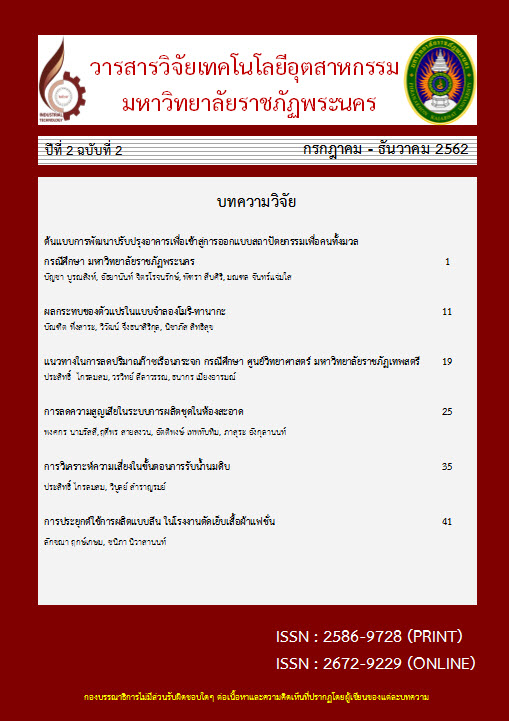Parametric Study of a Mori-Tanaka Model
Keywords:
Short Fiber Composite, Parametric Study, Fiber Orientation Distribution, Anisotropy, Mori-Tanaka ModelAbstract
The Mori-Tanaka model combined with an orientation distribution function of the reinforcements can be used to calculate the anisotropic elastic properties of a short fiber reinforced composite from the volume fraction and orientation of the reinforcements. The applicability of the model has been demonstrated in rice husks reinforced polypropylene composite. However, because the elastic moduli of the rice husks and the matrix are within an order of magnitude, the model cannot show the ability to capture the effects of high modulus reinforcements. This work further investigates the responses of the Mori-Tanaka model with an orientation distribution function under a range of model parameters to gain an insight into the model behavior and its limitations. The parameters under study include the reinforcement morphological and geometrical properties, such as orientation distribution, volume fraction and dimensions, and the relative moduli between the matrix and the reinforcements. The model is theoretically shown to be suitable for modeling short fiber reinforced composite but with limitations.
References
2. Dunn, L.M., Ledbetter, H., Heyliger, R.P. and Choi, C.S., 1996., Elastic constants of textured short-fiber composites., Mechanics of solids, vol. 44(9), January 1996, pp. 1509-1541.
3. Dunn, L.M., and Ledbetter, H., 1997., Elastic-plastic behavior of textured short-fiber composites. Acta Material, vol. 45(8), November 1997, pp. 3327-3340.
4. Ferrari, M. and Johnson, G.C., 1989., Effective elasticities of short-fiber composites with arbitrary orientation distribution, Mechanics of Material, Vol. 8, November 1989, pp. 67-73.
5. Fu, S.Y., and Lauke, B., 1998., The elastic modulus of misaligned short-fiber-reinforced polymers. Composites Science and Technology, Vol. 58, July 1997, pp. 389-400
6. Jearanaisilawong, P., Eahkanong, S., Manonukul, A., and Phungsara. B., Determination of in-plane elastic properties of rice husk reinforced composite from orientation distribution of reinforcements and constituent properties, In Press.
7. Kanatani, K., 1984., Distribution of directional data and fabric tensors, International journal of engineering science, Vol. 22(2), pp. 149-164.
8. Marzari, N. and Ferrari, M., 1992., Textural and micromorphological effects on the overall elastic response of macroscopically anisotropic composites, Applied Mechanics, Vol. 59, pp. 269-275.
9. Mori, T. and Tanaka, K., 1973., Average stress in matrix and average elastic energy of materials with misfitting inclusions. Acta Metallurgica, Vol. 21, pp. 571.
10. Nadeau J.C. and Ferrari, M., 2003., Bounds on Texture Coefficients, Applied Mechanics, Vol. 70, March 2003, pp. 200-203
11. Weinberger, C., Cai, W. and Barnett, D., 2005., Elastic of microscopic structures, Stanford University, March 2003.


